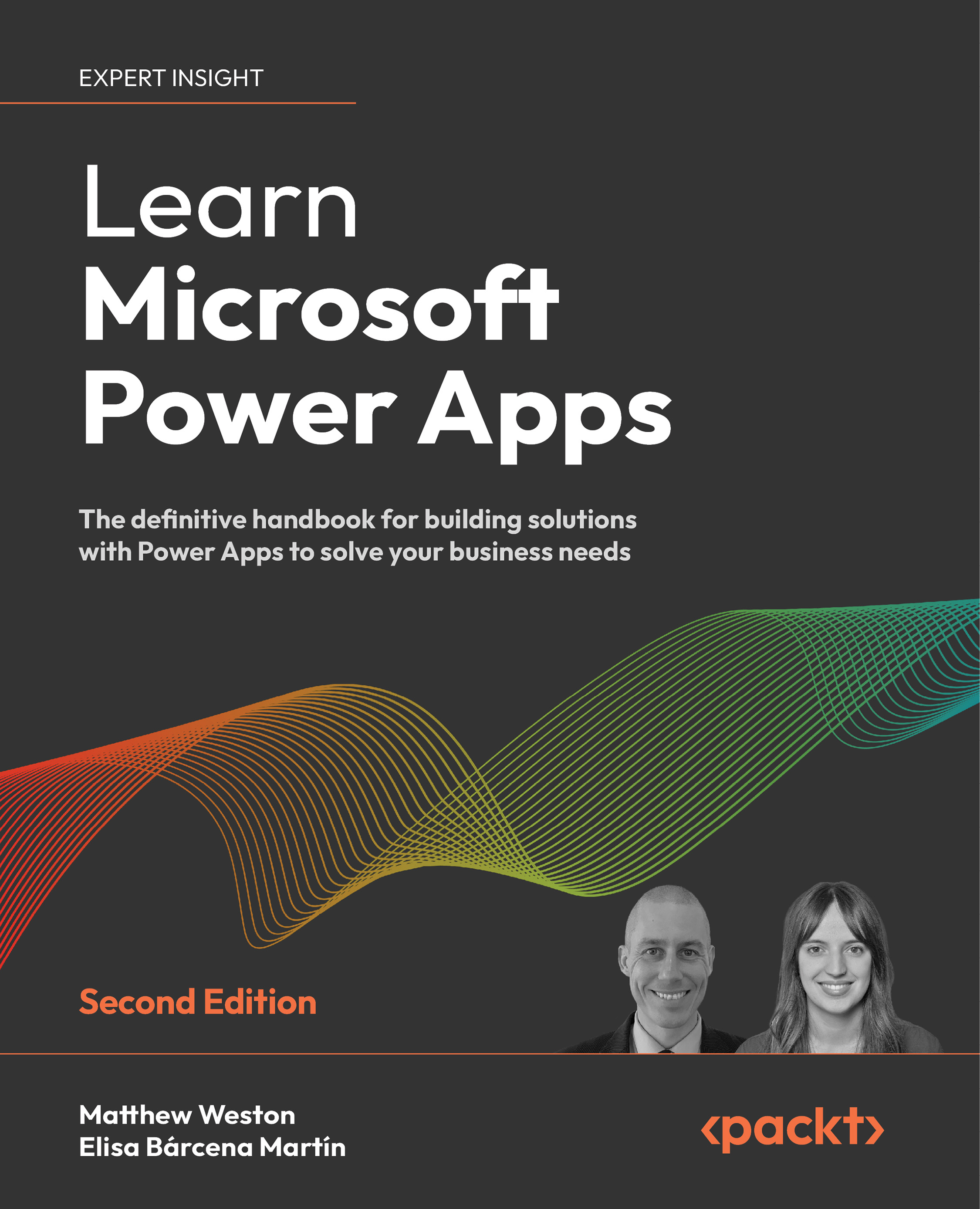A
actions 372
using , in Power Automate 379-382
Active Directory Domain Services (ADDS) 411
Add picture control
using 317, 318
AI Builder 468
licensed 469, 470
AI capabilities
exploring 470-472
AI models types 468
reference link 468
alternate keys, creating with Power Apps
reference link 513
app
creating, from SharePoint 64
maps, placing into 288
Power BI, embedding 451, 452
publishing 76, 77
setting, to respond to permissions 347-349
application lifecycle management (ALM) 503
Application Protocol Interface (API) 269
app manifest 110
exporting, from Power Apps 110-113
app navigation, in model-driven app
reference link 578
App OnStart formula 459
app settings, Power Apps Studio
Display settings, modifying 48
General settings, exploring 45
modifying 44, 45
Support settings, using 54
Upcoming features, accessing 53
Apps screen 15
artificial intelligence...



 Free Chapter
Free Chapter

